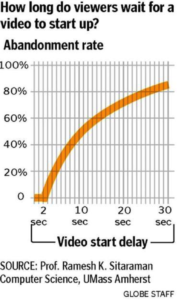Our attention spans and patience are short. We delete unopened emails, speed date, order food from smart phone apps to avoid waiting in line, pay extra for same day shipping, and even communicate using single letters, like “k”. Not only do these behaviors apply to our everyday lives, but also influence our attitudes towards advertising. We skip 15-second pre-roll ads on YouTube videos, hardly glance at print copy, and skip commercials. For us as advertisers, this is bad news.

Spend 125 seconds reading this blog and you can make, and save, a lot of money. So stay with me on this.
David Rock, Director & CEO of The NeuroLeadership Institute thought leader in the global coaching profession, says people are experiencing an epidemic of information overload. The amount of information our brain is exposed to is greater than the amount it can process. On top of that, our hyperactive brains operate at warp speed. In terms of processing language and speech, the average human brain can articulate 120-150 words per minute, and process around 350-500 heard words per minute.
What does this mean for us as advertisers? Your audience will instantaneously discard your message if it is not a direct hit. In order to directly communicate with them, you need to capture their attention. There are two types of attention that your advertisements should aim to capture:
- Transient attention: a short-term response to a stimulus that temporarily attracts/distracts attention. For example, catching your audience’s eye with striking visuals is a good way to gain transient attention. Researchers disagree on the exact amount of human transient attention span; some say it may be as short as eight seconds.
- Selective sustained attention: also known as focused attention, is the level of attention that produces the consistent results on a task over time. In advertising, oftentimes long form video is used to sustain attention through emotional appeal. Some state that the average human attention span is approximately five minutes.
If you reach the right audience in the right place with a relevant message, you have only eight seconds to really engage them. So make your eight seconds count.
In her book “Talk Less, Say More”, Connie Dieken’s examines three essential and inscrutable steps to capture the attention of an audience:
- Connect: to connect with an audience, you have to respect the audience’s time and information overload. Give it to them straight and simple.
- Convey: use clear, dynamic visuals, tell stories, and give your points in groups of three.
- Convince: lead people to action by sounding confident, bringing the audience in and allowing them to own the solution.
The key to getting the transient and sustained attention of your audience is to know them. What are their wants and needs? What is their preferred communication style? Focus on connecting, conveying information, and convincing your audience. These rules apply to all communication whether it’s a speech, letter, email, web content or a print ad.
It’s all about talking less and saying more. Bonding with your audience and convincing them to take action results in you making more money: and it all starts with getting their attention.
Oh, and congratulations on reading this whole article.
